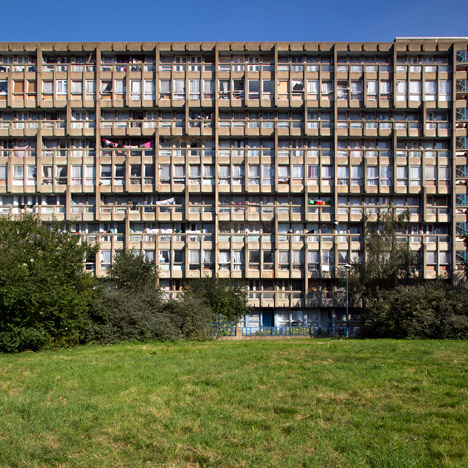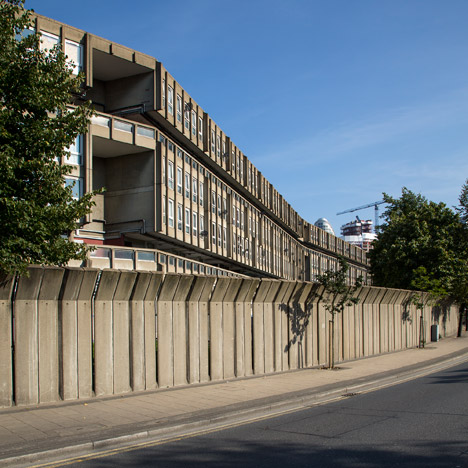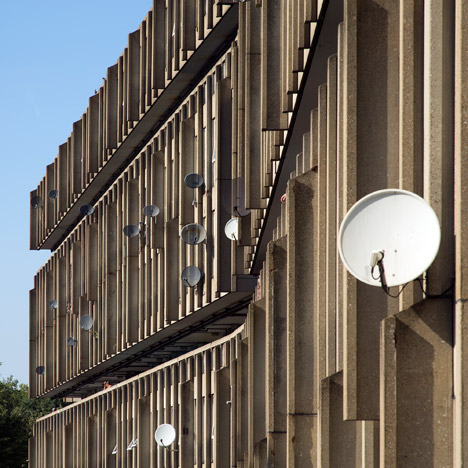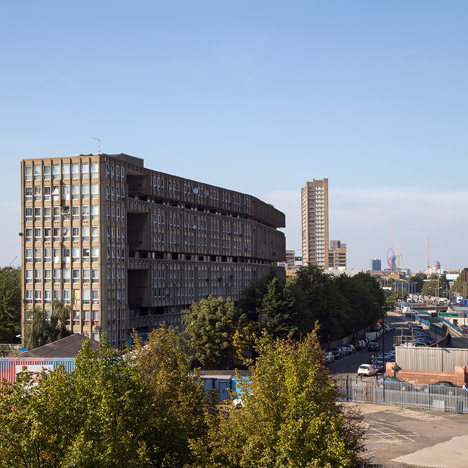Last-ditch bid launched to save Robin Hood Gardens from demolition
A high-profile campaign to save the Brutalist Robin Hood Gardens housing estate in London has been revived.
Heritage organisation the Twentieth Century Society has filed a new report calling for the preservation of the Alison and Peter Smithson-designed estate, which is heralded by many as one of the UK's most important examples of Brutalist architecture.
The complex is currently scheduled for demolition as part of a huge housing project led by development company Swan and supported by the local council Tower Hamlets.

The UK government granted Robin Hood Gardens a five-year immunity from heritage listing in 2009 – meaning that the council were able to approve demolition despite a preservation campaign backed by hundreds of architects, including Richard Rogers, Zaha Hadid, Robert Venturi and Toyo Ito.
Now that five-year period has expired, the society has submitted a new report, claiming the decision not to protect the estate with a formal heritage listing the first time around was ill-judged.
It reads: "We believe that none of the reasons given for not listing Robin Hood Gardens is convincing or properly evidenced according to listing criteria, and that the previous decisions not to list were unsound."
"It is therefore desirable in the interest of maintaining a consistent standard of assessment to reassess the building afresh and incorporate the new evidence."
Robin Hood Gardens was completed in 1972 in Poplar, east London, by the Smithsons, who had already established themselves as two of the key protagonists of the so-called New Brutalism. Based on the concept of "streets in the sky", the estate comprises two concrete slab blocks arranged around a garden made of up raised mounds.

The 213-apartment complex was first threatened with demolition in 2008 when Tower Hamlets council revealed plans for a wider redevelopment of the area beside the Blackwall Tunnel – a major road that connects north and south London.
The campaign to save the buildings, backed by British architecture magazine BD, did not receive support from the government-run English Heritage and an immunity from listing was granted by then UK Culture secretary Andy Burnham.
Tower Hamlets Council has now applied to renew the certificate of immunity, prompting the Twentieth Century Society to respond.
The report accuses English Heritage of "a fundamental misunderstanding of the aesthetic intention of the project", with references to the characteristics concrete structure and the success of the open-air "street decks".

It also states that the global reputation of the Smithsons has grown significantly in the past five years, and challenges claims by English Heritage that the building has suffered from decay.
"It is acknowledged that Robin Hood Gardens has produced divided opinions," it reads. "If these are examined, it will be found that the adverse opinions may not be well informed in respect of the architectural significance, or the performance of the building in use, but based on prejudice against social housing as a type, against modern architecture, or against the idea of the architect as intellectual."
A spokesperson for English Heritage confirmed the report has been received, following the application from Tower Hamlets Council, but that no action has yet been taken.
"We included Twentieth Century Society in our consultation process and they produced a report in response," she told Dezeen. "We are currently in the process of considering all consultation responses before making our recommendation to the Secretary of State."

Amanda Baillieu, the former editor-in-chief at BD magazine, said she didn't expect English Heritage to change its mind. "Of course it should have been listed, just like Park Hill, but it wasn't and we need to move on," she said.
Several architecture firms are involved in the multi-phase proposals for Robin Hood Gardens and the surrounding estate, including Aedas, Metropolitan Workshop, Jestico & Whiles and Karakusevic Carson. Some demolition work has already begun, but the Smithsons' buildings are currently still intact.
Photography is by Luke Hayes.